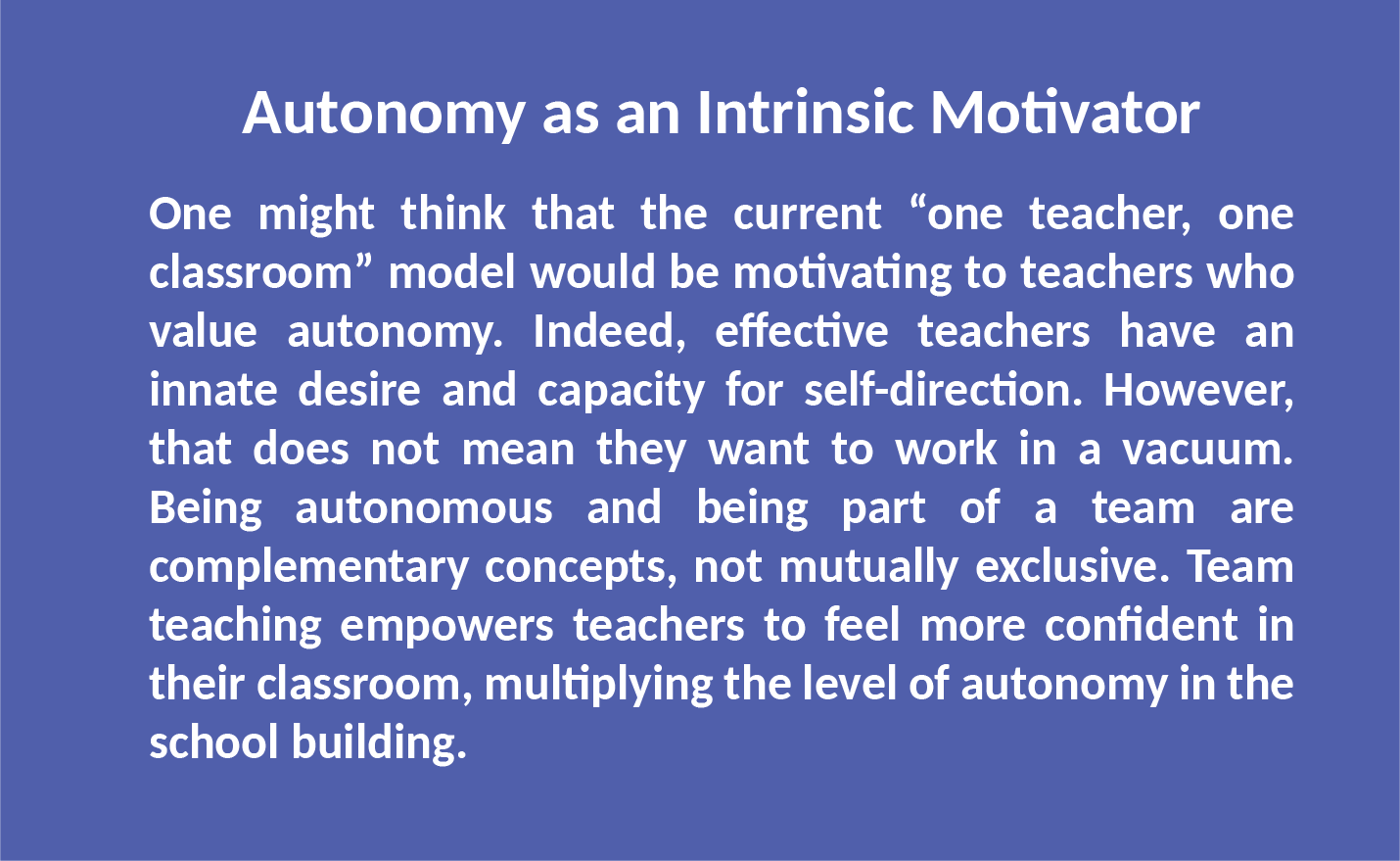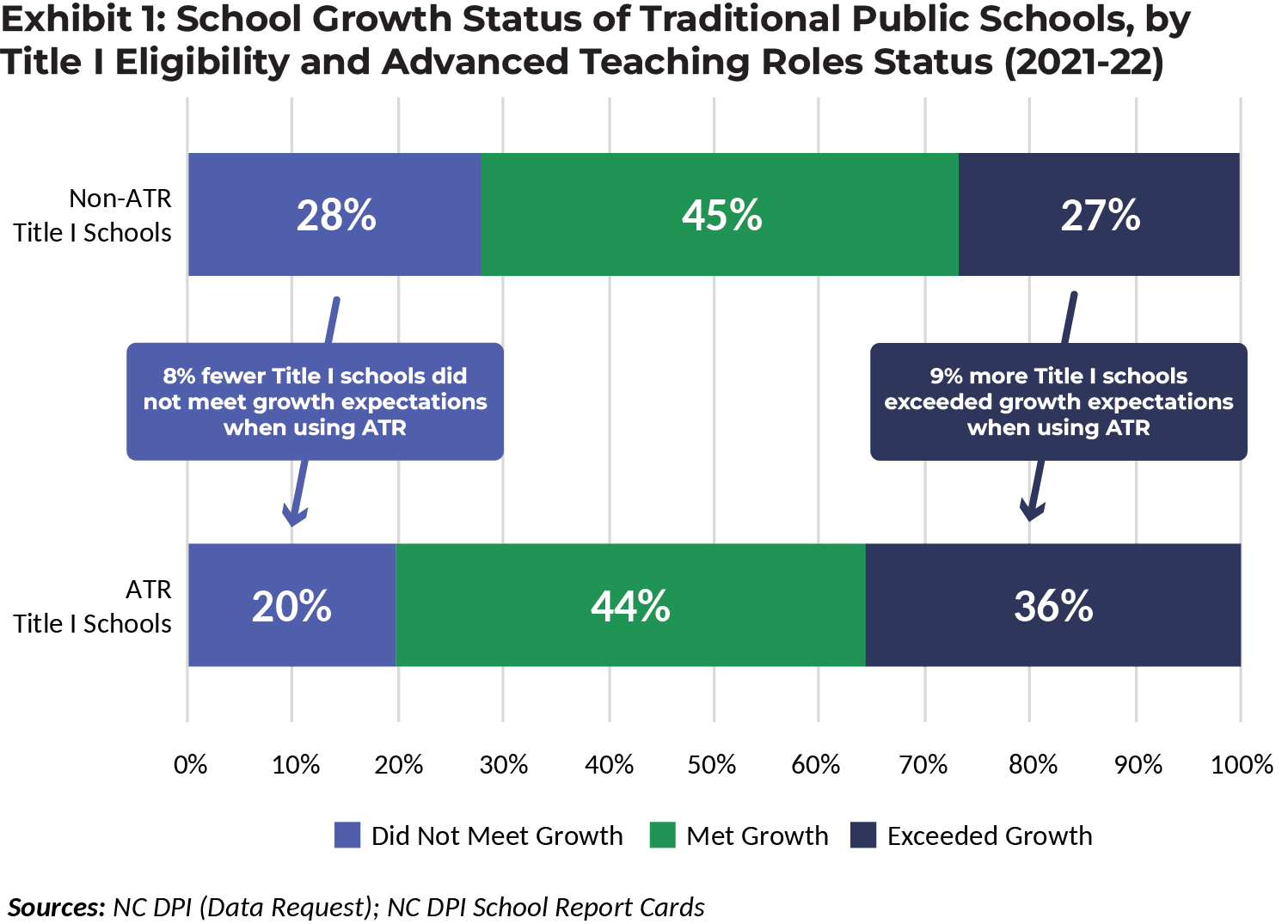Best Practices in Teacher Pay: Strategic Staffing and Advanced Teaching Roles
A comprehensive, professional compensation plan includes layered pay strategies that build on one another to ensure the recruitment and retention of a high-quality workforce. This is the fifth in a series of blogs highlighting best practices in teacher pay featured in detail in BEST NC’s report, Teacher Pay in North Carolina: A Smart Investment in Student Achievement.
Strategic Staffing Models Offer High-Skill Professionals Mastery, Autonomy, and Purpose
In his book Drive: The Surprising Truth About What Motivates Us, Daniel H. Pink examines professional compensation and how it does (and does not) motivate employees. He contends that base pay is fundamentally important to fulfill a biological need to support oneself and one’s family. It also matters that individuals feel that they are fairly paid for the skills they hold and the work they do.
Once these baseline pay needs are met (i.e., they are adequate and equitable), what drives high-skill professionals to improve their performance are intrinsic motivators like better working conditions, more career opportunities, and the satisfaction of working with a great leader – specifically, jobs that offer mastery, autonomy, and purpose.

While compensation is, by definition, an extrinsic motivator, it can also fund and fuel organizational structures that provide intrinsic motivators to both the recipient and their colleagues. For example, most schools operate outdated, flat organizational models that provide teachers with minimal opportunities for professional advancement without leaving the classroom. In these scenarios, all teachers are stuck on the same pay schedule, regardless of whether they have the skills and willingness to extend their reach beyond a traditional teaching position. Data from the National Center for Education Statistics School Staffing Survey indicate that almost one in ten teachers leaving the profession cite a lack of opportunities for professional advancement among the reasons for their departure.
Instead, compensation systems should facilitate the development of innovative organizational structures that provide intrinsic motivators such as the opportunity for advancement or greater professional support, as opposed to the “one teacher, one classroom” system that exists now. These modernized organizational structures, known in North Carolina as Advanced Teaching Roles, allow effective teachers to extend their reach to additional students and/or teams of teachers and earn more money while doing so. These strategic staffing models help increase the instructional skill and capacity of the entire staff while also enhancing the level of purpose experienced by lead teachers.
Advanced Teaching Roles: North Carolina’s Strategic Staffing Initiative
In North Carolina, 24 school districts are offering career advancement opportunities to teachers through the state’s Advanced Teaching Roles program. In schools using ATR, highly effective teachers are elevated to leadership positions in which they receive substantial, ongoing pay increases for taking on additional responsibilities and extending their reach. These teachers, in turn, provide intrinsic motivators to their colleagues by elevating their mastery and impact in the classroom.
 In ATR models, teachers extend their reach by either directly teaching more students or – more often – by leading a team of teachers and providing instructional support for all the teachers on the team. As a result, ATR teachers increase the instructional capacity of the entire staff; provide embedded, intentional support for novice teachers; and ensure more students get access to effective instruction. Additionally, since leadership is distributed in a more balanced and purposeful way, principals are more accessible and can focus on other critical school operations like staffing, curriculum, family and community relations, and more.
In ATR models, teachers extend their reach by either directly teaching more students or – more often – by leading a team of teachers and providing instructional support for all the teachers on the team. As a result, ATR teachers increase the instructional capacity of the entire staff; provide embedded, intentional support for novice teachers; and ensure more students get access to effective instruction. Additionally, since leadership is distributed in a more balanced and purposeful way, principals are more accessible and can focus on other critical school operations like staffing, curriculum, family and community relations, and more.
Salary supplements for ATR positions range from $2,000 to $10,000 for Extended Reach Teachers, who directly teach a greater number of students, and from $6,000 to $20,000 for Lead Teachers, who lead groups of teachers and are responsible for the learning of all the students on their team.
A study of ATR programs in Charlotte-Mecklenburg Schools, Cabarrus County Schools, and Syracuse City School District (New York) found that teachers on a Multi-Classroom Leader (MCL) team benefitted immensely from that support. Teachers joined the MCL-led teams, on average, at the 50th percentile in student learning gains. After one year on an MCL team, they produced learning gains equivalent to teachers in the 75th to 85th percentiles in math, and the 66th to 72nd percentiles in reading.

In 2021-22, Title I schools in North Carolina implementing ATR staffing models had higher student growth scores, on average, than Title 1 schools not using ATR (see Exhibit 1, to the right).
Expansion of the Advanced Teaching Roles program is a high-impact strategy to increase pay, while extending the reach and purpose of highly effective educators and improving the instructional capacity and mastery of all teachers.
Expanding Advanced Teaching Roles in North Carolina would modernize severely outdated school staffing models while providing benefits to students, teachers, and school leaders alike.



